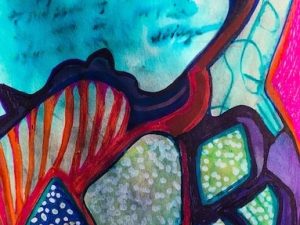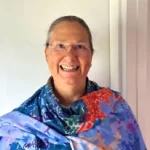
From Violence to Hope (pastel) by Polly Castor
–
A couple days ago, I gave my PowerPoint talk again, the one entitled “Abstraction: Between Realism and Non-Objective Art” to a large homeschool co-op in Newtown, Connecticut, not far from where the Sandy Hook shooting took place back in 2012. Being there, a couple days after another massacre in Las Vegas, got me thinking. Would those shooters have done these horrible things if they had had enough art in their life? I genuinely mean that question in a deep way, so let’s consider it.
I am not a mental health professional per se, and know nothing about all sorts of fancy medical prognoses, but as a spiritual healer, I deal with people in crisis situations of all kinds. I have seen prayer and love smooth clients past all sorts of heart-rending issues. I’m not a psychiatrist, but I’ve helped many people that might have used one instead.
I am not an education professional either, although I have homeschooled all the way through high school, three exceptionally successful, contributing members of society, who are balanced, compassionate, intelligent, social, and strong. I am not a helicopter mom, a tiger mom, or even a snow-plow mom. We just did a lot of things right with some basically solid, good material: we didn’t have the TV on, we read to them tons, especially picture books, and there was always a lot of creative endeavor going on.
They took pottery, ballroom dancing, sewing, and music lessons; they were active on swim teams, in 4H and Shakespeare plays, on Lego League teams, and on a FIRST robotics team. They spent a lot of time outside camping, hiking, and nature journaling. They built block cities, a paper Parthenon, and a even made a wooden model of a hand complete with rubber band tendons. For Halloween, there were inventive handmade costumes. One year, our daughter went as a pyramid, while her brother was Pharaoh. The little sister preferred being a skunk with her handmade black and white tail able to flip up and spray people. We had a monthly presentation club where they told about what they were learning and interested in, where the audience earnestly listened. There were art fairs and science fairs. The point is, there were many outlets through which to express themselves.
The first chapter of Genesis in the Bible talks about God as the Creator of all, and that we are made in His image and likeness, to be very good. That means, we all reflect God’s creativity. We are all programmed to be creative. We are all designed to be good. We need these qualities in order to flourish.
I have always remembered a fact shared in the movie Dislecksia. It said that 85% of those incarcerated in the prison system are dyslexic. It struck me how underserved that population has been. This was especially palpable to me because I have known and helped many dyslexic homeschoolers, as well of those of other less common learning styles. The education system generally does not accommodate people of all learning these styles, but labels them instead, and then medicates them. That’s why a lot of people homeschool, because it is possible to better serve all sorts of learning styles, without them being ostracized.
So when the prisoners were in school, their needs as dyslexics were not met. They felt left out, frustrated, and still in need of expressing their innate creativity. If they couldn’t get positive attention, they went for negative attention. They acted out and made bad choices, because good choices seemed closed to them.
What if the education system had run with their strengths, and managed their weaknesses? It sure would be cheaper and more humane than locking them up later. They could be helping our country, instead being a drain on it. A high percentage of CEO’s and millionaire’s are dyslexic, and the difference between them and the inmates is cited to be mothers that insured that their unique needs were met.
So what is the key to their strengths? Nourishing their creativity! The right side of the brain fires especially strongly in dyslexics. Meanwhile, a testing culture of schooling, exacerbated by No Child Left Behind, is leaving art and music more and more out of the equation, therefore losing more and more of the kids that don’t fit the arbitrarily favored, but frankly limited, left brained model. Additionally, the large percentage of poor and minority prisoners also have had the least access of art education. This is particularly sad when one realizes that it is the creative thinkers that the world needs most these days to solve our mounting problems in fresh ways.
We need everyone to embrace diversity of all sorts, and we particularly need to embrace all sorts of learning styles as normal and good. Creativity needs to become as central in school as getting the right answer. When you try to force someone with one learning style to learn with a different learning style, you are asking them to be someone they are not. It is like saying only whites are the norm, so blacks, Asians, and Hispanics should conform to being white. We would never do that. But for those folks with different learning styles, we do essentially do this all the time, marginalizing them pitifully. Try having that wear on you year after year, and you might want to act out negatively too. We need to stop being condescending to differences of all sorts, and truly find ways to include, involve, and appreciate all sorts of people.
Tons of value put on a diversified art education can seriously contribute to helping everyone live in a healthy, contributing way. Everyone needs to express themselves, have ways work through their emotions, as well as creatively solve problems. This must no longer be considered a low priority, nor expendably non-essential.
With all the color, art, and creative expression in my homeschool, you’d think that would be what my kids ended up doing professionally, but that is not the case. They are doing public policy, big data engineering, and theoretical physics, respectively. Art, music, and dance, along with reading, writing, math, and science, gave them a secure baseline from which to build their lives. They are all creative in their chosen fields, as well as in their personal lives. This is what I would hope for everyone.
And what I am saying does not just hold for those in school. Career people and retirees need art and music and dance and poetry and theater in their lives just as much as kids do. I am thriving because I paint. There is no better interfaith way to connect with one’s Creator, and feel one’s deepest sense of being okay, than by being creative in some medium. It is centering, meditative, encouraging, reassuring, fun, and life affirming. I can’t be myself without it.
I would have all of us have that baseline of art education and constructive expression in our lives. Authentic art makes us feel joyous and well-adjusted, gives us important tools to use to deal with and process adversities and distressing occurrences when we experience them, and facilitates the creative thinking that will solve our global challenges.
We all need love, but we profoundly need opportunities for original expression too. To be healthy, we need to be involved in inventive projects as “makers.” This is preferable, more productive, and more happiness inducing, than passively sitting in front of a screen, being docile conformists in a narrowly rigid world, or worse, destructively expressing oneself as a gunman popping off.
I would recommend sorting kids early by learning style. These tendencies show up as young as kindergarten age. Then customize a targeted program that caters directly to each of those learning styles, specifically meeting their needs, without anyone ever feeling that one is better than another. We all have our strengths and differences, and we can be taught collectively to need and appreciate them all. All learning styles should do all subjects in their own way, but strong art and music education, as well as outdoor play, should be as central as academics. This is what homeschoolers do and it works.
So I know it sounds a bit simplistic, but I think this dichotomy of alternatives is basically on target: creative, varied, art education fostered full thrust and genuinely valued for all ages, or more people shot down dead with escalating incarcerations. Why oh why have we consistently chosen the later?
And consider this: they are doing less art now then ever before in the schools. How does this bode well for our future?
–
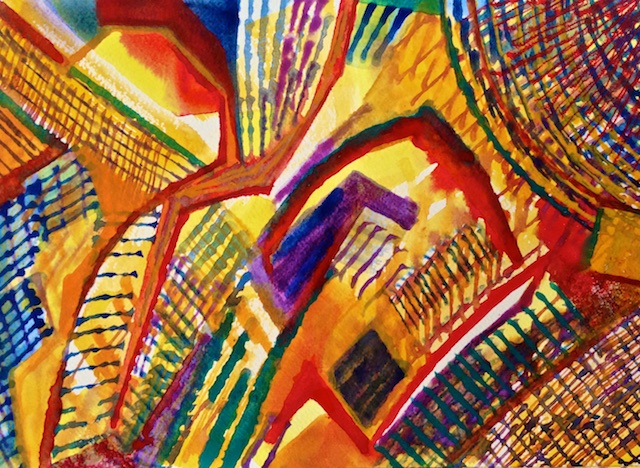
On the Passing of My Mother (watercolor) by Polly Castor

Fake News (pastel) by Polly Castor
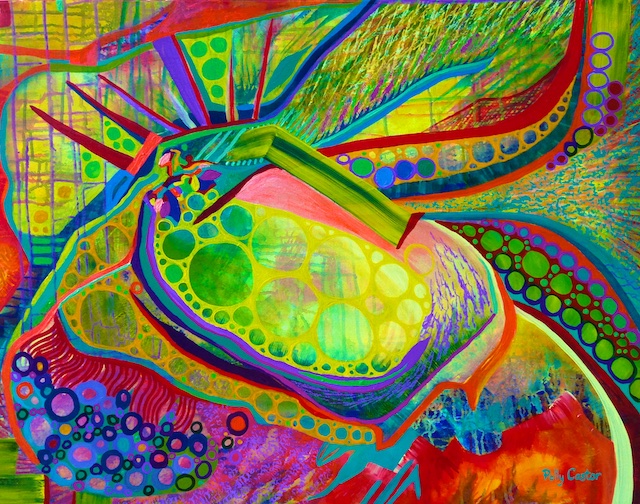
Underlying Issues (acrylic) by Polly Castor

Not My President (mixed media) by Polly Castor
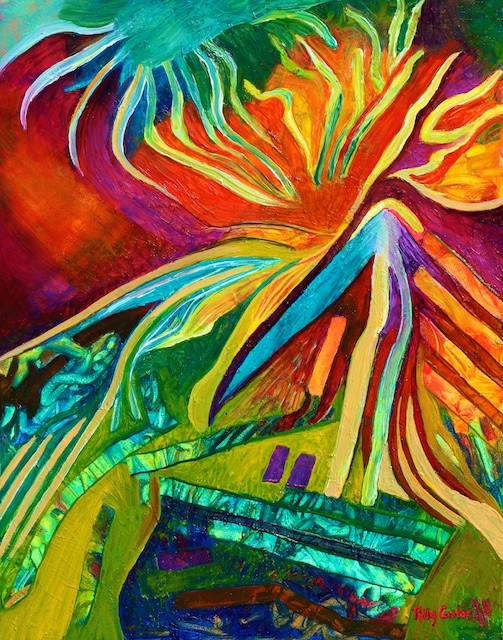
Safe in Psalm 91 (oil) by Polly Castor
6 Comments
-
This is profoundly moving and so true. Bless you dear Polly
-
Agree!
-
Wonderful article, Polly! Thank you!
-
I’m sure you know the most famous example: Hitler was denied entry to art school and ended up becoming a fascist dictator. But even if he had gone to art school and become an artist, I don’t think he would have been a particularly nice person. That doesn’t seem to have been part of his persona.
-
Polly, this is one of your posts that I saved for a time when I could read it through. It’s been a while since you wrote it. It was well worth saving! So interesting and moving at the same time. (I did not know that 85% of those in prison were dyslexic. What a sad statistic. And to realize that this can be redressed early on in a child’s life to the great benefit of the child and of our world. Thanks, Polly.
Pingbacks
-
[…] Art Education and Mental Health […]


